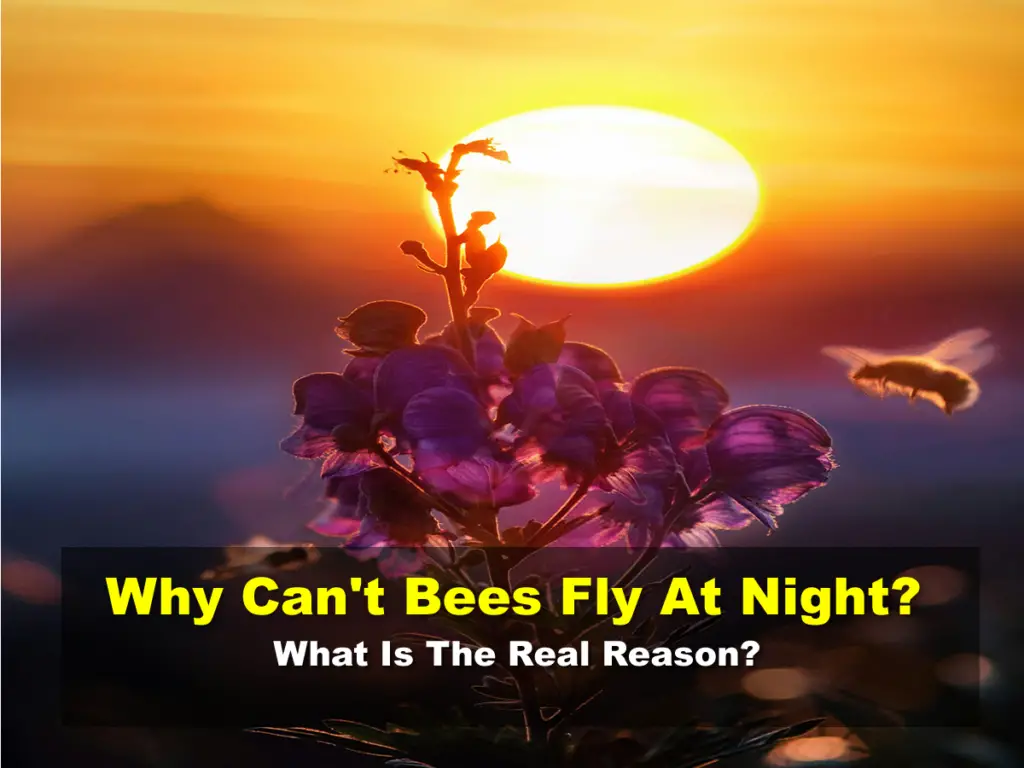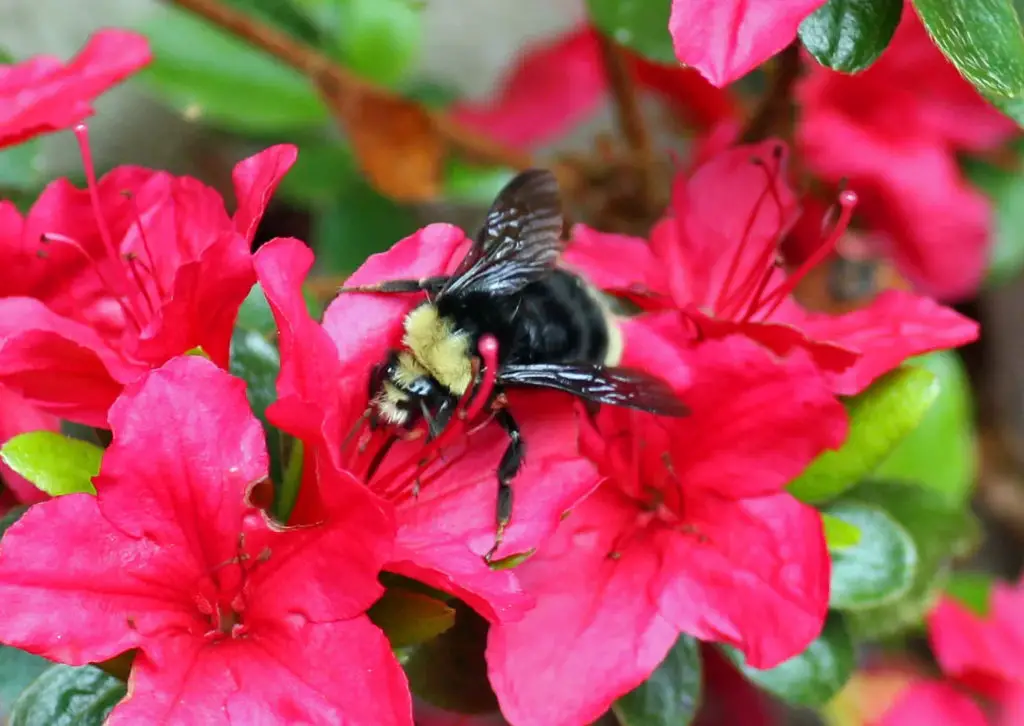Affiliate Disclaimer - As an Amazon Associate I earn from qualifying purchases.
It supports the website. So, Thank you
Have you ever seen a bee buzzing around after the sun has gone down? It’s probably not a question that keeps you up at night but once you realize that these amazing insects are only out in the day, it makes you wonder why can’t bees fly at night?
The main reason that bees cannot fly at night is to do with their eyesight. They often used polarized light for navigation and at night, it’s just too dark. Plus, in many areas, the temperature drops at night and bees can only fly when conditions are optimal.
Considering that bees rely so heavily on flight for foraging, it’s surprising that there’s so many things that have the potential to restrict this. But another surprising fact is that not all bees struggle to fly at night.
Table of Contents
Can Bees Fly In The Dark?
This is a very broad question when you consider that there are tens of thousands of species of bees. It goes without saying that there’s a great amount of diversity between these species and, as such, each has its own characteristics.
When talking about whether bees are diurnal (active in the day), nocturnal (active at night), or crepuscular (active at dusk and dawn), you could say any one of these things. That’s because different species are active at different points of the day.
More often than not, however, bees are diurnal which means that you’ll see them buzzing around during the day as they forage for nectar and pollen. While there are some nocturnal bee species (which I’ll discuss later), this isn’t very common.
So, for these day time bees, it just isn’t possible for night time flight and that’s largely to do with the eyesight of the bee.
Interestingly, bees have five eyes; two compound eyes and three simple eyes. These simple eyes are responsible for detecting movement and, more importantly for daytime foraging, light. In fact, they’re incredibly effective and bees will even use polarized light as a way of navigating between flowers and back to the hive.
Of course, they couldn’t possibly rely on this way of seeing after dark so it goes without saying that flying at night would be fraught with difficulties; and a lot of bumping into obstacles.
It’s also worth mentioning that many bee species, including the honey bee, require a temperature of at least 50ºF in order to be physically able to fly. In a lot of places around the world, the temperature will drop below this at night, making it impossible for bees to get out even if they could see.
Special Night Time Bees
Now, while most bees are equipped for daytime activity, there are some that are specially adapted for night time flight. These are called nocturnal bees and they rely on night-blooming plants for foraging. You’d be surprised at how many flowering species open at night, especially in tropical parts of the world where these nocturnal bees are most common.
In order to be able to fly at night, however, these bees do need to be able to see so what’s the difference in their eyes?
If you look closely at the eyes of a nocturnal bee, like the Indian carpenter bee, you’ll notice that they are much larger than those of a diurnal species. This allows more light to get in, enabling the bee to see better in the dark. However, it’s worth keeping in mind that most scientists agree that even nocturnal bees need some sort of moonlight before they can efficiently fly after the sun goes down.
What’s The Deal With Nocturnal Bees?
So, the question we have to ask ourselves next is why have some bees adapted these special abilities that allow them to fly at night?
There is a very common argument that these species evolved to become nighttime foragers as a way of eliminating problems with competition. During the day, there are plenty of other bees and insects buzzing around and, where there are problems with dense wildlife populations, this could lead to food becoming more scarce.
Foraging at night using night-blooming flowers, means that these nocturnal species don’t have as much of a fight on their hands to get the good stuff!
Crepuscular Bees
If it wasn’t enough that some bees have evolved to forage at night, there are other species that are crepuscular. This is a word to describe animals that spend the majority of the day resting but become active around dusk and dawn for hunting/gathering.
There are actually many more crepuscular bee species than there are nocturnal ones and these include individuals from the Apidae, Andrenidae, Colletidae and Halictidae families. Here are some examples:
- Caupolicana ocellata
- Megalopta genalis
- Xenoglossa fulva
- Lasioglossum (Sphecodogastra) galpinsiae
- Ptiloglossa arizonensis
Final Thoughts
It’s common to see bees active during the day and many people assume that this is how all species behave. While most bees are considered to be diurnal, there are a few examples of nocturnal and crepuscular bees.
But we still have to wonder why bees can’t fly at night if they’re a diurnal species. Yes, they may be more active in the day but surely night flight is possible?
It isn’t. That’s because of how these bees’ eyes work and they simply don’t allow enough light in to be able to see to fly in the dark.




